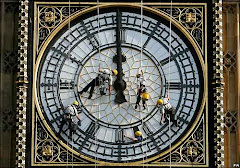How Jewish is Jerusalem?
You might think that's a silly question, but in the world of academia, revisionist history and even biblical archaeology, scholars have cast the shadow of doubt over Judaism's intrinsic connection to Jerusalem. The Moslem Waqf, the religious authority that administers the Temple Mount -- the site of Judaism's First and Second Temples -- has been claiming for years that there was never a temple there. But the idea that Israel is the historic homeland of the Jewish people and Jerusalem its holy capital has been under attack from far more reputable sources in recent decades as well.
Looking in the Wrong Place
But the debunkers of Jewish biblical history got some bad news recently, when a spunky, dedicated archaeologist began her latest dig. Dr. Eilat Mazar, world authority on Jerusalem's past, has taken King David out of the pages of the Bible and put him back into living history. Mazar's latest excavation in the City of David, in the southern shadow of the Temple Mount, has shaken up the archaeological world. For lying undisturbed for over 3,000 years is a massive building which Mazar believes is King David's palace.
For Mazar, 48, one of the world's leading authorities on the archaeology of ancient Jerusalem and head archaeologist of the Shalem Center Institute of Archaeology, the discovery was the culmination of years of effort and solid speculation. From the time she was a teenager, she had her nose in archaeology literature, and worked closely with her grandfather, renowned archaeologist Benjamin Mazar, who conducted the southern wall excavations next to the Western Wall. She holds a doctorate in archaeology from Hebrew University, is author of The Complete Guide to the Temple Mount Excavations, and in the 1970s and '80s worked on the digs supervised by Yigal Shilo in the City of David. The significant discoveries made then, including a huge wall called the "stepped-stone structure" -- which Shilo believed was a retaining wall for David's royal palace or part of the Jebusite fortress he conquered -- ignited Mazar to continue to look for the prize: David's palace itself.
Some biblical scholars gave up looking for the palace because, according to Mazar, they were looking in the wrong place. Scholars searched for remains of the palace within the walls of the ancient Jebusite city that David conquered and called Ir David (City of David). This city, while heavily fortified with both natural and man-made boundaries, was also very small, just nine acres in size. When no evidence of such a majestic palace as the Bible describes was found there, the next step was to claim that David's monarchy never really existed.
But Mazar always suspected that the palace was outside the original city, and cites the Bible to prove it. When the Philistines heard that David had been anointed, they went on the attack to apprehend him. This occurred after he conquered the Fortress of Zion, which was the actual nucleus of the city, and built his palace. The Bible says that David heard about it and "descended to the fortress," (2-Samuel 5:17), implying that he went down from his palace, which was higher up on the mountain than the citadel/city.
Mazar told Aish.com: "I always asked myself: Down from where? It must have been from his palace on top of the hill, outside the original Jebusite city."
Mazar says she was confident in her assessment of where the palace would be. What she discovered was a section of massive wall running about 100 feet from west to east along the length of the excavation (underneath what until this summer was the Ir David Visitors Center), and ending with a right-angle corner that turns south and implies a very large building.
Scientist, Not Philosopher
Within the dirt fill between the stones were found pottery shards dating to the 11th century BCE, the time when David established his monarchy. Based on biblical text and historic evidence, Mazar assumed that David would have built his palace outside the walls of the fortified but cramped Jebusite city which existed up to 2,000 years before; and in fact, the structure is built on the summit of the mountain, directly on bedrock along the city's northern edge, with no archaeological layers beneath it -- a sign that the structure constituted a new, northward expansion of the city's northern limit.
Complete Story: http://www.aish.com/jw/j/48961251.html
Thursday, July 16, 2009
Subscribe to:
Post Comments (Atom)


No comments:
Post a Comment
Note: Only a member of this blog may post a comment.